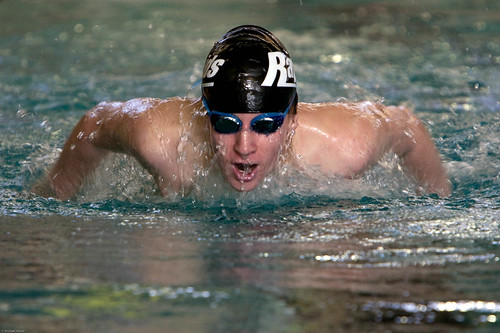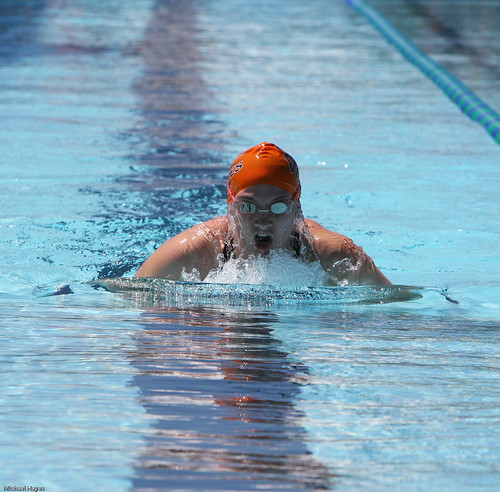If there were ever a downside to being a former newspaper photographer, it would be the loss of access privileges now that I’m Joe Schmo, freelancer.
If you’re at all interested in sports photographer, you should know that without “access,†your chances of getting good pictures isn’t very good.
Access means you have some sort of credential that allows you to walk around designated areas. Concert photographers know the value of the venerable “Backstage Pass.â€
 Michael Hayes has aspirations as does my student Bobby Hester to shoot Sports.
Michael Hayes has aspirations as does my student Bobby Hester to shoot Sports.
It’s probably no coincidence that more guys show an interest in Sports than gals. No doubt about this one: gendered-biased.
My good friend Milka Soko is probably the exception.Â
When it comes to soccer, I don’t know anyone who is more interested in soccer than her.
I’m offering Michael some tips on improving his pictures. He’s gutsy, asking a complete stranger for feedback.
Of these 2 swimming pictures, I like Jackie’s picture shot in daylight better. Color’s better. The quality he can get from the better lighting conditions gives him more options.
The EXIF data from the daylight picture is as follows:
ISO 400, 1/2500 sec @ f8 with his 70-200mm zoom. Probably JPEG.
My Suggestions:
Higher Shutter Speed
Given the lighting conditions, Michael could have shot at an even higher shutter speed. Equivalent exposure would have been 1/8000 sec @ f4 or between f4< <f5.6. Higher shutter speed gives you more burst rate, shallower depth-of-field.
Tighter Crop
The picture could be cropped even tighter  for more impact like the one of  Taylor taken indoors. Cropping tighter will remove the lane separator in the top right in the background. With the Canon 40D, with “Quality†set to Large, you have a lot of pixels, so you can still crop in.
Also consider shooting RAW, if you have Adobe Photoshop, Â when you’re zoomed in all the way and the image still appears small in the viewfinder.Â
This suggestion may slow you down but you will love the quality. Basically what shooting RAW does is like giving ability to zoom some more since you’re using the full 14 Megapixels. Each image is significantly bigger than your Large jpeg.
Location
If at all possible, when shooting the Freestyle, figure out which side the swimmer will surface to breathe. It’s nice to see faces instead of the back of heads. You want to be on the side of the pool where you can see their faces.
This will be an occasional feature on my blog whenever I get requests for a critique. Since this is completely voluntary on my part and Michael’s, I felt sharing like this will benefit visitors to this blog. Hopefully I wasn’t too harsh Michael. Thanks for sharing your pictures.

Mike,
You’re right about the face in “freestyle.” Slightly from behind is best. As to which side a swimmer breathes, if you follow the team often, you might be able to figure that out. Especially if the swimmer has some sort of technique.
I don’t feel your “crop” is bad or rather my suggestion is the “correct” way. When it comes to cropping, sometimes loose is okay. The way it is now, your picture would be perfect for a cover of a magazine. Picture the “Title” up top.
You should set your camera to shoot both RAW and Jpeg. Just process the jpegs. If you have great picture, you have more megapixels to play with in the RAW file. If you don’t have any good pictures, then just delete.
Pete,thanks for the feedback. And you weren’t even close to being harsh. When I was cropping Jackie I originally wanted to go tighter but second guessed myself wanting to leave more depth. As you rightly suggested, I should have gone with my initial thought.
You make an excellent point on shooting Freestyle. It is by far the most difficult of the four strokes to capture well. One point to consider is that not all swimmers breath the same. Some breath on both sides which makes your job much easier. Others only breath on one side which gives you a 50/50 chance of getting it right. On the longer races you may have time to walk to the other side of the pool or wait for the return leg. On 50’s you better be right the first time.
I’ve also found that you get a better view of the face when you shoot from slightly behind. Think of a perpindicular line from the side of the pool where you’re standing as Noon, to your left is 9 and to your right is 3. If the swimmer approaches from your left (9), the best opportunity for a good face shot will be on your right between Noon and 2.